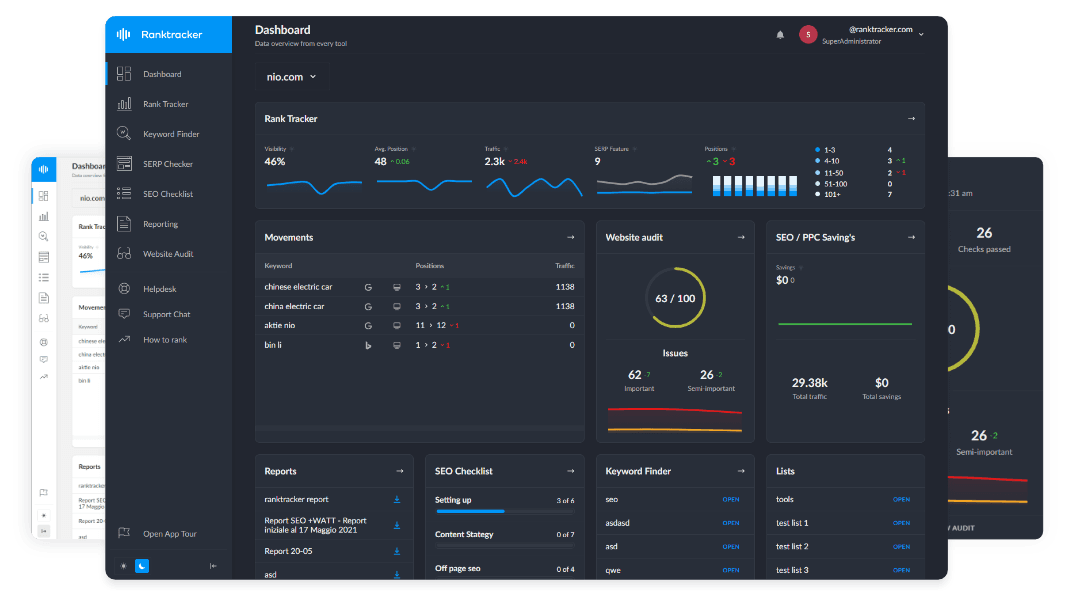Intro
Thailand has a rapidly growing digital economy, with over 50 million internet users and a strong emphasis on mobile-first browsing. While Google dominates the search engine market, social media and e-commerce platforms also influence search behavior. To succeed in Thai SEO, businesses must adapt to local search trends, language preferences, and mobile optimization. This guide provides a step-by-step approach to SEO in Thailand.
1. Understanding the Thai Search Landscape
Google Thailand holds over 97% of the search engine market share, making it the primary focus for SEO. However, Facebook, Line, and Pantip also play a significant role in how Thai users find information.
Key Factors Affecting SEO in Thailand:
- Mobile-first search behavior, with over 80% of searches coming from mobile devices.
- High engagement with social media, impacting brand discovery.
- Bilingual search queries, as Thai users mix Thai and English in searches.
- Growing e-commerce adoption, with platforms like Lazada, Shopee, and JD Central dominating online shopping.
2. Keyword Research for the Thai Market
SEO in Thailand requires a combination of Thai and English keywords, as many users search using both languages.
Best Practices for Keyword Research:
- Use Google Keyword Planner, Ahrefs Thailand, and Ranktracker’s Keyword Finder to find high-volume local search terms.
- Optimize for long-tail, intent-based keywords (e.g., "ร้านอาหารทะเลที่ดีที่สุดในกรุงเทพ" – "Best seafood restaurant in Bangkok").
- Consider phonetic Thai searches (e.g., "คาเฟ่ (cafe)"), as many English words are adapted into Thai.
- Analyze trending topics on social media, as they influence search behavior.
3. Local SEO for Businesses in Thailand
With millions of Thai users searching for nearby businesses, local SEO is crucial for visibility.
Optimizing Google Business Profile (GBP):
- Ensure NAP (Name, Address, Phone Number) consistency across directories.
- Optimize your business description in both Thai and English.
- Collect and respond to customer reviews, as Thai users trust peer recommendations.
- Add high-quality images and location-based keywords.
Building Local Citations and Business Listings:
- Get listed on Wongnai, Pantip, YellowPages Thailand, and ThaiFranchiseCenter.
- Register your business on Lazada, Shopee, and Facebook Marketplace if applicable.
4. Content Optimization for Thai Audiences
Thai users prefer engaging, visually rich content, especially on social media and blogs.
Content Best Practices:
- Write in Thai for better engagement, but include some English keywords for searchability.
- Use a conversational and friendly tone, as Thai culture values approachability.
- Optimize for voice search, as many Thai users search using Google Assistant.
- Create long-form, authoritative content that answers specific questions.
5. Technical SEO Considerations
Given Thailand’s varying internet speeds, website speed and mobile optimization are crucial.
Technical SEO Checklist:
- Use a .co.th domain for local relevance.
- Optimize for Core Web Vitals to improve page speed and usability.
- Implement AMP (Accelerated Mobile Pages) for faster mobile performance.
- Ensure mobile-first indexing is enabled, as smartphone usage dominates.
- Use structured data (schema markup) to improve search visibility.
6. Link Building & Digital PR in Thailand
Quality backlinks from Thai websites help boost domain authority and rankings.
Effective Link Building Strategies:
- Get featured on Pantip, Sanook, and Thai news websites (Bangkok Post, Thairath, Manager Online).
- Collaborate with Thai influencers and bloggers for guest posts.
- Participate in local forums and Facebook Groups to increase brand awareness.
- Submit press releases to Thai media outlets.
7. Measuring SEO Success in Thailand
Tracking SEO performance ensures continuous improvements and strategy adjustments.
Key Metrics to Monitor:
- Organic traffic growth via Google Analytics.
- Keyword rankings using Ranktracker’s SERP Checker.
- Click-through rate (CTR) and bounce rate for engagement insights.
- Conversions from organic search to measure SEO effectiveness.
Conclusion
SEO in Thailand requires a mobile-first, bilingual, and culturally adapted approach. By implementing local SEO strategies, optimizing for user behavior, and leveraging social media trends, businesses can effectively rank higher and engage Thai audiences online.

